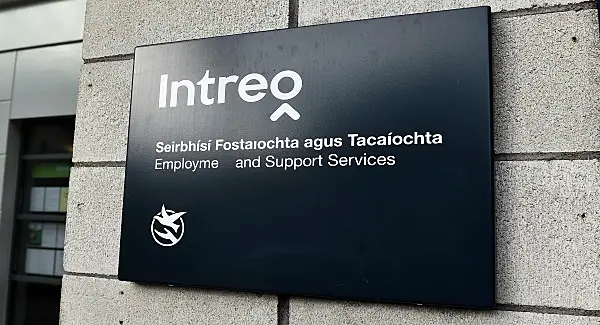Many communities remain scarred by high levels of unemployment. Kyran Fitzgerald reports that many people could secure jobs if they were provided with the right tools.
The jobs market is booming yet the number of people remaining outside the jobs market in disadvantaged areas remains stubbornly high.
A leading State agency set out to discover why so many still find it difficult to make the transition from the world of state benefits to that of employment, at a time when many jobs are proving hard to fill.
The National Economic and Social Council (NESC) has just published two lengthy research papers, based on interviews with 92 people living in, or connected to, an unidentified low-income suburb in Dublin.
The interviews, which took place in 2016 and 2017, focused on “low work intensity households” where the total amount of employment was less than 10 hours per week.
Twelve senior officials and 11 service managers contributed to the project along with 34 service users from the households.
Interestingly, only five of the 34 participants had no experience in the labour market. Ten had worked in medium skill jobs and four in high-skill employment. One participant had quit work because rent supplement is not paid to people working over 30 hours a week.
In 2016, almost one in eight Irish adults, 11.6%, lived in households where no one worked. This was above the EU average of 10% despite Ireland’s much more buoyant employment scene. Almost one in seven of our children are growing up in such households.
Not surprisingly, a much higher proportion of these — 42% — are at risk of poverty compared to the general population.
Leaving to one side the implications for those at risk, one-fifth on the taxpayer arising from this disconnect is heavy: In 2016, total social welfare expenditure stood at just under €12bn, one-fifth of which was in the form of direct income support.
The Government has acted — under pressure from the EU-IMF-ECB troika — by introducing so-called labour
market activation measures. In 2012, it published a strategy document, ‘Pathways to Work’. The document led to the establishment of Intreo, a one-stop shop for benefit claimants. Recipients are required to engage with this organisation. Other agencies in the area include the Local Employment Service and Job Path.
Labour market activation has been in vogue since the 1990s with countries such as the US and Denmark leading the way. The idea is that welfare recipients are contacted at an early stage, with the aim of re-equipping them for new or replacement jobs. Many are placed on personal progression plans.
Intreo offers courses, typically short-term, following an interview process to benefit claimants. These usually result in entry-level qualifications.

Employment schemes including Community Employment and Tús, soak up many of the participants, at the first stage.
But views of the services are pretty mixed.
One survey interviewee, the manager of a training centre, was pretty succinct: “It is speed dating...You go into
Intreo for 15 minutes...It’s got more to do with referrals than placement.”
Four of the employers interviewed by NESC were also largely negative about Intreo, considered to be too slow to respond to queries; asking for too much paperwork; and failing to identify suitable employees.
The obstacles faced by those making the transition from welfare to work are often particularly daunting.
One interviewee, Hanna, described how her unemployed husband received temporary Christmas work worth €400 over three weeks. They had been receiving €420 in benefits a week, including a fuel allowance. The household lost out on three weeks’ fuel allowance while also incurring €90 in petrol outlay.
“Taking the job set us completely back,” she said. Many fear the loss of housing assistance and, in particular, the loss of their medical card should they take up employment. One householder put it: “I’m on medication for the rest of my life. The tablets alone are nearly €70 a month.”
Rules on payments hamper the take-up of jobs. Carers’ allowance allows recipients to work, or be in training for a maximum of 15 hours a week. Then there are childcare costs.
A senior official at a State agency told NESC: “After-school provision is completely inadequate in Ireland.. a handful of schools are providing this care.”
Many are reluctant to approach Intreo or a welfare officer to ask about levels of support.
Some still do not have access to computers in an increasingly online world. NESC points to a low awareness of supports, including recent Back to Work initiatives.

Those returning to work can retain their medical card for three years. This is not widely known in the community of the underemployed.
Foreign nationals have had serious difficulty getting recognition for qualifications earned in their home countries. Could they be given exemptions or some allowance for qualifications to enable them to pursue relevant courses?
Community workers suggest some youths from disadvantaged areas with particular skills in areas such as motor repair are having difficulty even securing apprenticeships.
The surveys point to a lack of co-ordination between agencies and to the placement of people on courses which they have no interest in, while sought-after courses are difficult to access.
Many of the services are lacking in personnel, the legacy of a long recession. This means that people are offered minimal levels of career guidance.
One interviewee refers to the “carousel of courses”. There is evidence that Community Employment and Tús schemes have been less successful than the much-derided Job Bridge in steering people into the labour market.
Of course, what we are dealing with is the legacy of a system largely based on cash handouts and sporadic interventions aimed at curbing those seeking to abuse the system. This, in turn, has led to low levels of trust between client and service provider.
The NESC publication contains plenty of insights although its findings will, no doubt, not surprise those with expertise in the field. The move from welfare to work is pitted with obstacles, many of them unintended. There has been some progress in important areas. New apprenticeships have opened up new areas of opportunity.
A key question remains : How can the tricky task of reconnecting people from jobs and income blackspots with the labour market be best achieved at a time when technology is shifting the ground beneath so many jobs? Are people being equipped for jobs which may soon no longer exist, at least in their current form?
It would seem, however, that investing more resources in ensuring greater face time between case officers or trainers and clients could well repay itself. What the report makes clear is that while issues such as crime and drug addiction play a big part in reducing involvement in the jobs market, the causes of persistent unemployment in Ireland’s fast growth large urban economy are altogether more complex.
Many of those interviewed in this survey appear equipped to participate if they could only be provided with the right tools.






